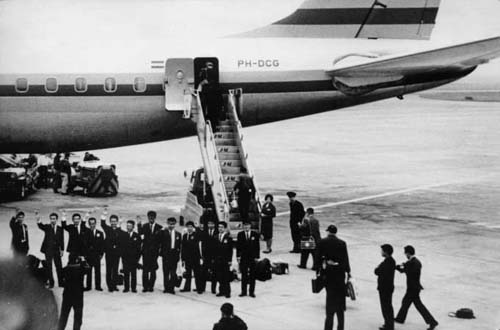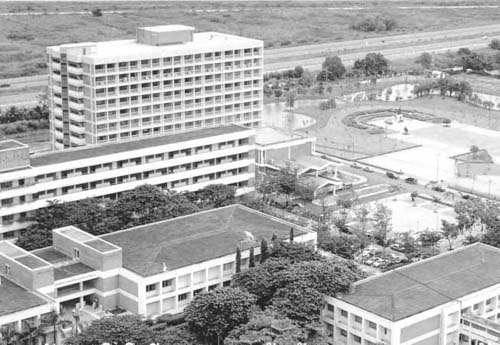Japan's Official Development Assistance White Paper 2006
Main Text > Part I JAPAN'S OFFICIAL DEVELOPMENT ASSISTANCE FOR WORLD PEACE AND PROSPERITY > Chapter 1 The Role of ODA: Its Transition and Changes > Section 1. The Early Years of Japan's ODA - The 1950s
Section 1. The Early Years of Japan's ODA - The 1950s
The issues that have needed to be addressed through ODA change with the times. Japan's ODA, which has been provided to 185 countries and regions around the world for more than 50 years, has contributed to improving the world situation and has dealt with issues that have changed with the times. In the following section, the objectives and roles of ODA as implemented over the years by Japan are presented (refer to the 2004 ODA White Paper for further details of ODA's 50 years of history).
The Constitution of Japan proclaimed in 1946 clearly states that Japan will fulfill an active role in fostering peace and development of the international community by peaceful means, not by force of arms, under the doctrine of international cooperation and pacifism. Promoting the welfare of developing countries and contributing to the stability and development of the countries through ODA is an important means of making international contributions suitable for the basic doctrine of the Constitution of Japan.

The first members of Japan Overseas Cooperation Volunteers leaving Japan from Haneda Airport (Photo: JICA)
With the signing of the San Francisco Peace Treaty in 1951, Japan rejoined the international community. At this time, shortly after the end of World War II, crucial issues for Japan included achieving a rapid post-war reconstruction, restoring friendly relations with countries in Asia and around the world, and improving its position in the international community. To achieve these objectives, the ODA just initiated by Japan basically played two important roles. Firstly, financial assistance began as payment of post-war reparations to Asian countries with which Japan had concluded reparation treaties, such as the Union of Burma (the present Myanmar), the Philippines, Indonesia, and the Republic of Viet Nam (the present Socialist Republic of Viet Nam), and as the accompanying economic assistance. After this, full-scale financial assistance began, with ODA serving to rebuild friendly relations between Japan and Asian countries by supporting the recovery and development of the economies of these countries. ODA also served during the Cold War to draw these countries into the Western Bloc. Secondly, by contributing to the development of the Asian region, ODA played a role in Japan's export promotion policy from the medium- to long-term point of view. Moreover, the payment of reparations and concurrent economic assistance had a direct connection to Japan's exports because the goods and services procured were limited to those of Japan.

King Mongkut's Institute of Technology Ladkrabang. The institute grew into one of Thailand's major technical universities after it initially started in 1960 as the Nondhaburi Telecommunications Training Centre, founded with support from Japan.


 Next Page
Next Page